https://yle.fi/uutiset/3-10985324Ranskan, Saksan ja Britannian johtajat uskovat, että Iran on Saudi-Arabian öljyntuotantolaitoksiin aiemmin tässä kuussa tehtyjen iskujen takana. Näin ne asettuvat tukemaan Yhdysvaltojen näkemystä iskuista.
Maiden johtajat totesivat yhteisessä lausunnossaan, että on selvää, että Iran on vastuussa iskuista.
– Meille on selvää, että Iran kantaa vastuun iskuista. Muuta selitystä ei ole, Emmanuel Macron, Angela Merkel ja Boris Johnson totesivat lausunnossa.
Johtajat keskustelivat asiasta YK:n yleiskokouksen yhteydessä järjestetyssä tapaamisessa.
Euroopan johtajat kehottivat lisäksi Irania valitsemaan keskustelun provokaatioiden sijaan. Sekä Ranska, Saksa että Britannia ovat edelleen mukana Iranin kanssa solmitussa ydinsopimuksessa, josta Yhdysvallat irtaantui viime vuonna. Sittemmin Iran on lipsunut sopimuksen noudattamisesta.
Euroopan suurmaiden mukaan ratkaisu ulos tilanteesta onkin yhä diplomatia.
– Kehotamme Irania sitoutumaan keskusteluun ja pidättäytymään provokaatioiden ja kärjistymisten valitsemisesta, lausunnossa todetaan.
Johtajien mukaan iskut osoittavat, että jännitteet Persianlahdella pitää saada purettua. Siihen vaaditaan nimenomaan diplomatiaa ja kaikkien osapuolten sitoutumista.
Install the app
How to install the app on iOS
Follow along with the video below to see how to install our site as a web app on your home screen.
Note: This feature may not be available in some browsers.
You are using an out of date browser. It may not display this or other websites correctly.
You should upgrade or use an alternative browser.
You should upgrade or use an alternative browser.
https://www.scmp.com/news/china/dip...n-plan-joint-naval-drill-international-watersChina, Russia and Iran are planning a joint naval drill in the Sea of Oman and northern Indian Ocean “soon”, a semi-official Iranian news outlet reported on Saturday, just days after the United States blamed Iran for a drone attack on Saudi Arabian oil facilities.
General Ghadir Nezami Pour, head of international affairs and defence diplomacy of Iran’s General Staff of the Armed Forces, said the drill would take place in international waters, the Iran Press news agency reported.
“The exercises have different goals, including the exchange of tactical and military experiences, and sometimes they seek political goals which show a kind of convergence between participants,” he was quoted as saying.
“Officials at the level of defence minister, chief of staff of the armed forces and commanders of the armed forces will come to Iran in the near future and these actions reflect Iran’s active defence diplomacy,” he was quoted.
Tässä hyvä artikkeli Saudeihin kohdistuneesta iskusta.
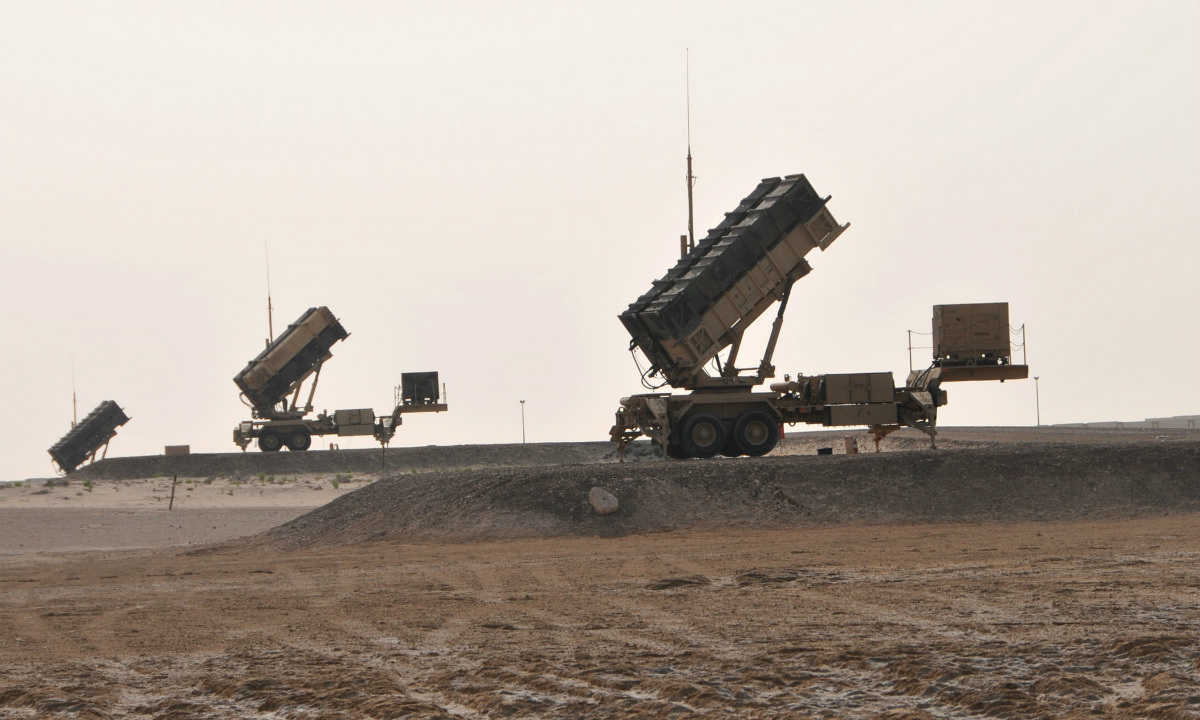
 mwi.usma.edu
mwi.usma.edu

What the Saudi Oilfield Strike Says about Modern Deterrence and Homeland Defense - Modern War Institute
A little over a week ago, two of Saudi Arabia’s major oil facilities, Aramco’s Abqaiq and Khurais, were hit by a series of strikes. A Houthi rebel group in Yemen […]
 mwi.usma.edu
mwi.usma.edu
Iran käy sotaa talouspakotteita vastaan niillä aseilla joita sillä on käytettävissään..Luonnollisesti se tekee kaikkensa oman yhteiskuntansa puolustuksen eteen.
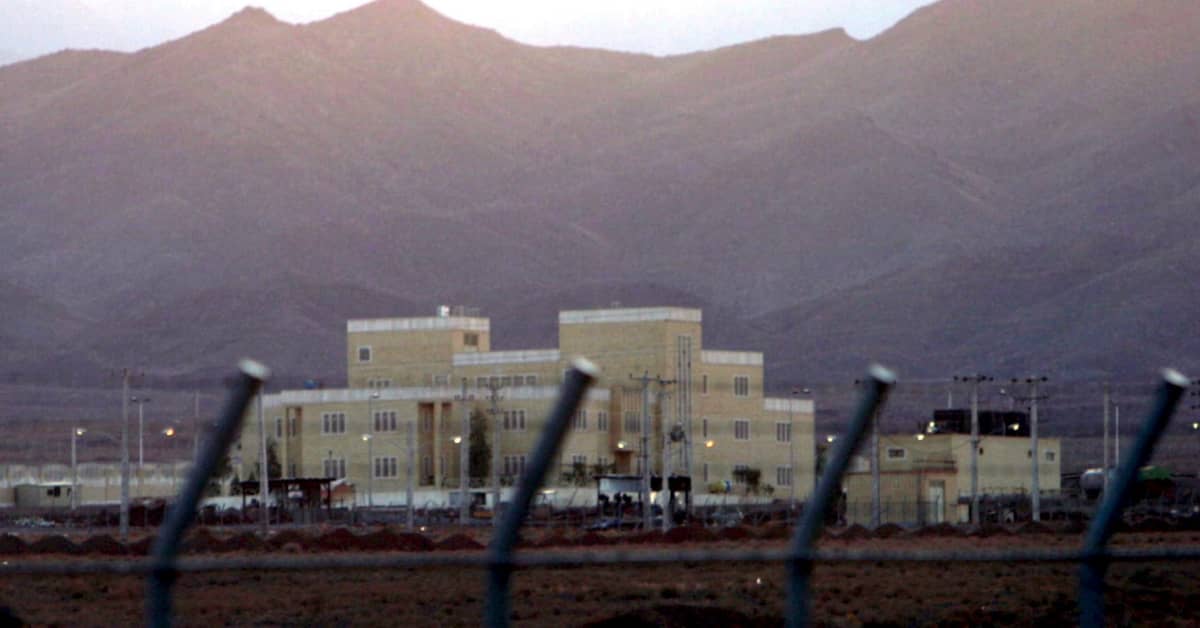
 yle.fi
Uraanin rikastaminen ja ydinaseen kehittäminen on ensivaiheessa vastavetona talouspakotteille. Pidemmällä tähtäimellä mahdollisesti valmistuvat ydinaseet tasoittavat tilannetta maan vihollisia vastaan.
yle.fi
Uraanin rikastaminen ja ydinaseen kehittäminen on ensivaiheessa vastavetona talouspakotteille. Pidemmällä tähtäimellä mahdollisesti valmistuvat ydinaseet tasoittavat tilannetta maan vihollisia vastaan.
- todennäköisintä on että palataan takaisin neuvottelemaan pakotteiden poistamisesta. Se turvaisisi parhaiten kaikkien osapuolten edut.
- kaikenlaiset hyökkäykset ja ohjusiskut Iraniin johtavat automaattisesti Hormuz'in salmen sulkeutumiseen sekä vastahyökkäyksiin Iran'in toimesta.
Toivotaan että neuvottelut saadaan käyntiin.. Sodan laajentuminen aiheuttaisi suuria vaurioita kaikkialla arabian öljyntuotannossa. Se puolestaan johtaisi suurin ongelmiin koko maailmassa.
IAEA: Iran rikkoo ydinsopimusta
Kansainvälisen atomienergiajärjestön mukaan Iran rikastaa uraania kehittyneillä sentrifugeilla.
- todennäköisintä on että palataan takaisin neuvottelemaan pakotteiden poistamisesta. Se turvaisisi parhaiten kaikkien osapuolten edut.
- kaikenlaiset hyökkäykset ja ohjusiskut Iraniin johtavat automaattisesti Hormuz'in salmen sulkeutumiseen sekä vastahyökkäyksiin Iran'in toimesta.
Toivotaan että neuvottelut saadaan käyntiin.. Sodan laajentuminen aiheuttaisi suuria vaurioita kaikkialla arabian öljyntuotannossa. Se puolestaan johtaisi suurin ongelmiin koko maailmassa.
Iranin kaappaama tankkeri päästettiin lähtemään
Ruotsalaisomisteinen alus joutui suurvaltakiistan välikappaleeksi.
Olen jo aikaisemminkin todennut että sota Irania vastaan alkoi jo reilu vuosi sitten taloudellisten pakotteiden muodossa.
Jos edes hiemankin osataan ymmärtää eri osapuolten toimia ja tavoitteita niin on selvää ettei Iran kykene vastaamaan yhteiskuntaansa vastaan kohdistuvaan hyökkäykseen samalla aseella = talouspakotteella.
- en ole mitenkään yllättynyt että Iran pyrkii vastaamaan hyökkäykseen sellaisilla keinoilla joita sillä on käytössään.
- olisi erittäin yksinkertaista ja typerää kuvitella etteikö Iranilla olisi tavanomaisten aseiden (ohjusten jne.) lisäksi käytettävissään monenlaisia asymmetrisia keinoja/tapoja vastata itsensä kohdistettuun hyökkäykseen.
- keinot saattavat vaikuttaa esim. hallinnollisiin rakenteisiin naapurivaltioissa (vallanvaihdokset, sisäinen sotiminen jne.) kuten jo lähes kaikissa arabivaltioissa on tapahtunut.
- mahdollisesti jopa maailmantalouden rakenteisiin ainakin energiantuotannon sekä kustannustason osalta.
- vaikutuksia saattaa koiltua myös perinteiselle kansanvälisen politiikan ja talouden suhteille (uusia liittoutumia, taloudellisia sekä sotilaallisia kriisejä jne.)
Kaikenlaisilla sodilla on sellainen peruspiirre että ne on varsin helppo aloittaa mutta sodan lopettaminen onkin jo paljon vaikeampaa. Veikkaisin globaalilla tasolla ongelmat vain pahenee kun sotimisessa päädytään käyttämään perinteisten aseiden ja sotatoimien ohella erilaisia teknologiaan, poliittiseen hallintoon sekä talouteen liittyviä vaikutuskeinoja. Mahdollisesti tällaisten monirakenteisten toimintamallien käyttöönotto on eräiden toimijoiden taholta jopa tavoitteellista sekä tarkoituksellista.
Ehkä meillä on mielenkiintoisia aikoja tulossa.,.
Jos edes hiemankin osataan ymmärtää eri osapuolten toimia ja tavoitteita niin on selvää ettei Iran kykene vastaamaan yhteiskuntaansa vastaan kohdistuvaan hyökkäykseen samalla aseella = talouspakotteella.
- en ole mitenkään yllättynyt että Iran pyrkii vastaamaan hyökkäykseen sellaisilla keinoilla joita sillä on käytössään.
- olisi erittäin yksinkertaista ja typerää kuvitella etteikö Iranilla olisi tavanomaisten aseiden (ohjusten jne.) lisäksi käytettävissään monenlaisia asymmetrisia keinoja/tapoja vastata itsensä kohdistettuun hyökkäykseen.
- keinot saattavat vaikuttaa esim. hallinnollisiin rakenteisiin naapurivaltioissa (vallanvaihdokset, sisäinen sotiminen jne.) kuten jo lähes kaikissa arabivaltioissa on tapahtunut.
- mahdollisesti jopa maailmantalouden rakenteisiin ainakin energiantuotannon sekä kustannustason osalta.
- vaikutuksia saattaa koiltua myös perinteiselle kansanvälisen politiikan ja talouden suhteille (uusia liittoutumia, taloudellisia sekä sotilaallisia kriisejä jne.)
Kaikenlaisilla sodilla on sellainen peruspiirre että ne on varsin helppo aloittaa mutta sodan lopettaminen onkin jo paljon vaikeampaa. Veikkaisin globaalilla tasolla ongelmat vain pahenee kun sotimisessa päädytään käyttämään perinteisten aseiden ja sotatoimien ohella erilaisia teknologiaan, poliittiseen hallintoon sekä talouteen liittyviä vaikutuskeinoja. Mahdollisesti tällaisten monirakenteisten toimintamallien käyttöönotto on eräiden toimijoiden taholta jopa tavoitteellista sekä tarkoituksellista.
Ehkä meillä on mielenkiintoisia aikoja tulossa.,.
Viimeksi muokattu:
Aramco-iskuista uutta videomateriaalia. (Edit: VanhaPate olikin jo ehtinyt) 

Viimeksi muokattu:
Olen jo aikaisemminkin todennut että sota Irania vastaan alkoi jo reilu vuosi sitten taloudellisten pakotteiden muodossa.
Omasta mielestä tämä sota on ollut käynnissä Iranin vallankumouksesta lähtien. Aina se ei ole ollut kuuma, mutta mitään hyvää siitä ei ole tullut.
Air Force shifts Middle East command center from Qatar to South Carolina
“The functions that the CAOC provides for air power are so critical and so essential that we can’t afford to have a single point of failure,” said Maj. Gen. Chance Saltzman, using an initialism for the center.
“Iran has indicated multiple times through multiple sources their intent to attack U.S. forces,” said Col. Frederick Coleman, commander of the 609th Air and Space Operations Center.

“The functions that the CAOC provides for air power are so critical and so essential that we can’t afford to have a single point of failure,” said Maj. Gen. Chance Saltzman, using an initialism for the center.
“Iran has indicated multiple times through multiple sources their intent to attack U.S. forces,” said Col. Frederick Coleman, commander of the 609th Air and Space Operations Center.

Air Force shifts Middle East command center from Qatar to South Carolina
On Saturday, as 300 planes were up in the air in key areas such as Syria, Afghanistan and the Persian Gulf, hundreds of seats at the combined air and space operations center at Al Udeid Air Base in Qatar sat empty.
www.stripes.com
Jokainen voi ihan vapaasti muodostaa käsityksensä siitä mistä vallankumouksesta laskee sodankäynnin alkaneeksi. Persi/Iran on tuhansia vuosia vanha yhteiskunta ja valtio jonka hallintaan on liittynyt kaikenlaisia vaiheita... Tässä oheisena wikipediasta kopioitu lyhyt katsaus viimeisen sadan vuoden aikaisesta hallintojaksosta:Omasta mielestä tämä sota on ollut käynnissä Iranin vallankumouksesta lähtien. Aina se ei ole ollut kuuma, mutta mitään hyvää siitä ei ole tullut.
Perustuslaillisen vallankumouksen jälkeen Reza Pahlavi kaappasi vallan Qajar-dynastialta 1921.[11] Šaahi Reza Pahlavi teki suunnitelmia teollisuuden kehittämisestä, rautateiden rakentamisesta ja kansallisesta koulutusjärjestelmästä. Hänen itsevaltainen hallitsemistapansa aiheutti kuitenkin vastustusta. Toisen maailmansodan aikana maan miehittäneet liittoutuneet pakottivat šaahin luovuttamaan vallan pojalleen Muhammad Reza Pahlaville, jonka toivottiin olevan yhteistyöhaluisempi.[27]
Vuonna 1953 Anglo-Iranian Oil Companyn kansallistamisen vuoksi pääministeri Mohammed Mossadeq syöstiin vallasta brittien ja amerikkalaisten tiedustelupalveluiden avustuksella. Tarkoituksena oli suojella maiden öljyintressejä. Vallankaappauksen jälkeen monarkia palautui ja valta siirtyi takaisin šaahi Muhammad Reza Pahlaville. Hänen itsevaltainen hallintonsa johti lopulta islamilaiseen vallankumoukseen 1979, jota johti maanpaossa ollut ajatollah Khomeini.[11]
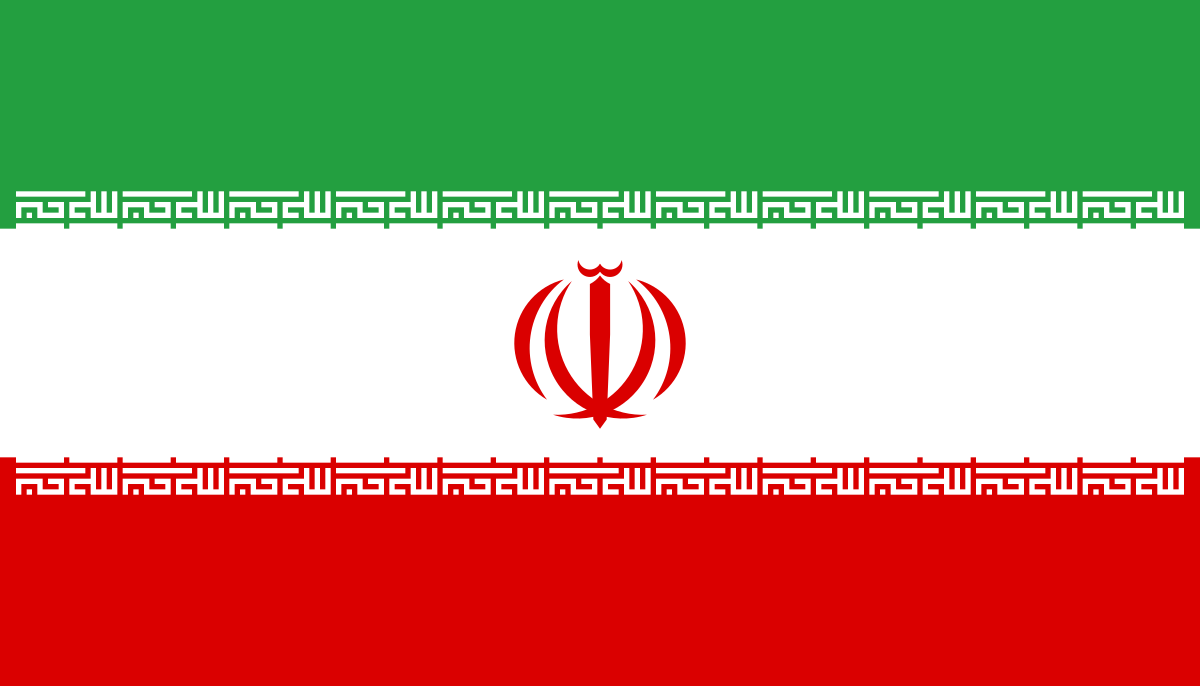
Iran – Wikipedia
MEK:in tiedusteluverkosto tiedottaa:
'The council, working through member group the People’s Mujahedin of Iran (MEK), says it has developed a large network of sources inside the Islamic regime and has revealed nuclear developments and facilities that were later confirmed by U.S. intelligence.
The council’s report said the MEK “has obtained exclusive and top-secret information sourced from inside the Iranian regime detailing the missile and drone attack carried out by the Iranian regime against the oil facilities of Saudi Arabia in Abqaiq and Khurais on September 14, 2019.”
The report said the Islamic Revolutionary Guard Corps (IRGC), Iran’s most powerful military group, “directed it at every step.”
It deployed commanders from Tehran to Khuzestan province in southwest Iran. There, the Omidiyeh air base unleashed Ya-Ali cruise missiles first unveiled in 2014.
Iran’s Supreme National Security Council approved the strike at a July 31, 2019 meeting attended by President Hassan Rouhani and Foreign Minister Mohammad Javad Zarif, the report said, at a time when escalating U.S. sanctions were taking a harsh toll on the Iranian economy.'
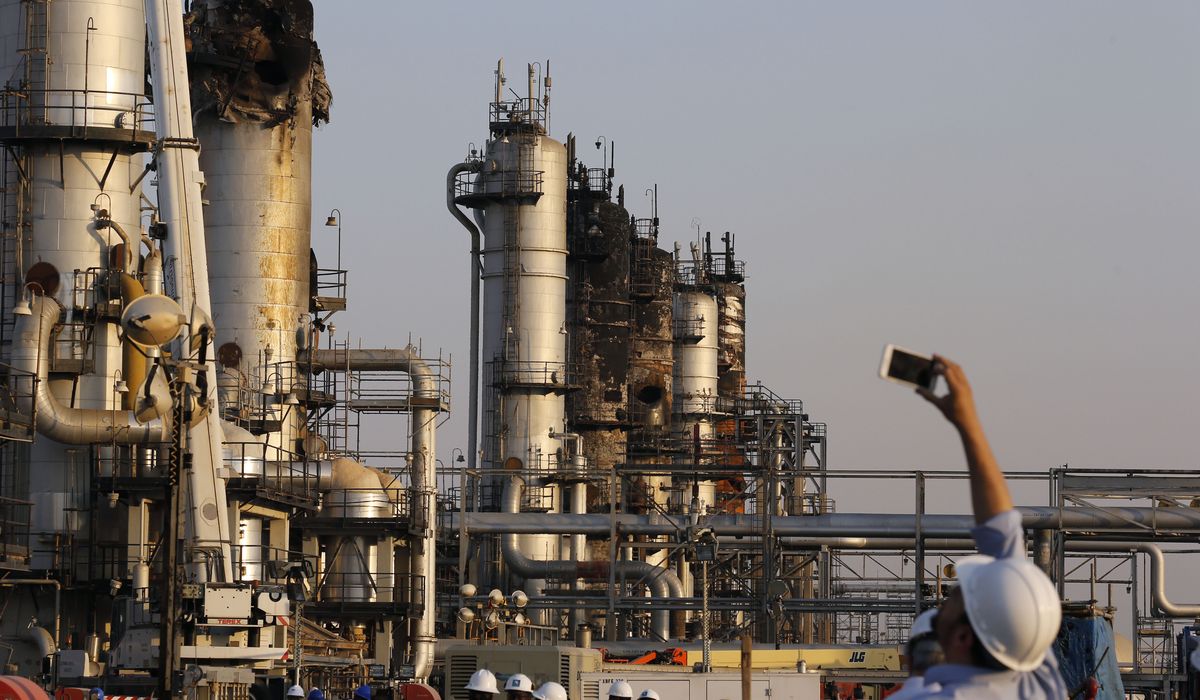
 www.washingtontimes.com
www.washingtontimes.com
Omidiyeh lentotukikohta

'The council, working through member group the People’s Mujahedin of Iran (MEK), says it has developed a large network of sources inside the Islamic regime and has revealed nuclear developments and facilities that were later confirmed by U.S. intelligence.
The council’s report said the MEK “has obtained exclusive and top-secret information sourced from inside the Iranian regime detailing the missile and drone attack carried out by the Iranian regime against the oil facilities of Saudi Arabia in Abqaiq and Khurais on September 14, 2019.”
The report said the Islamic Revolutionary Guard Corps (IRGC), Iran’s most powerful military group, “directed it at every step.”
It deployed commanders from Tehran to Khuzestan province in southwest Iran. There, the Omidiyeh air base unleashed Ya-Ali cruise missiles first unveiled in 2014.
Iran’s Supreme National Security Council approved the strike at a July 31, 2019 meeting attended by President Hassan Rouhani and Foreign Minister Mohammad Javad Zarif, the report said, at a time when escalating U.S. sanctions were taking a harsh toll on the Iranian economy.'

Exile group offers evidence Iran planned, carried out devastating Saudi oil strike
The largest resistance group to the Iran regime presented evidence on Monday that Tehran carried out the damaging Sept. 14 attack on Saudi Arabian oil facilities from a base inside Iran.
Omidiyeh lentotukikohta

Viimeksi muokattu:
Qassem Suleimani on ollut hääräämässä Libanonissa vuoden 2006 sodassa.
Shadowy Iran commander gives interview on 2006 Israel-Hezbollah war
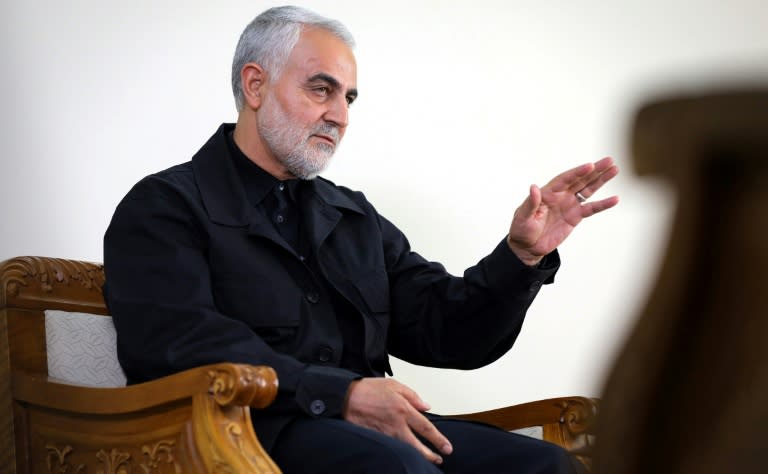
 news.yahoo.com
news.yahoo.com
Shadowy Iran commander gives interview on 2006 Israel-Hezbollah war
Tehran (AFP) - The shadowy head of Iran's elite Quds Force, Qassem Soleimani, gave an insight on his role in Lebanon during the 2006 Israel-Hezbollah war, in a rare interview broadcast Tuesday on state television.
The 90-minute interview was presented as the first of its kind with Soleimani, top commander of the Revolutionary Guards branch that runs foreign operations.
Soleimani said he spent almost the entire duration of the 34-day conflict in Lebanon, which he entered from Syria alongside Imad Moughnieh, a commander of the Iran-backed Shiite movement Hezbollah who was assassinated in 2008.
The 2006 war killed more than 1,200 Lebanese, mostly civilians, and more than 160 Israelis, mostly soldiers.
Apart from a one-day mission back to Iran "one week" into the war to report to supreme leader Ayatollah Ali Khamenei and return with a message for Hezbollah chief Hassan Nasrallah, Soleimani said he remained in Lebanon to oversee the fight.
He also recounted how, under massive Israeli bombardment of Hezbollah's stronghold in Beirut's southern suburbs, he and Moughnieh evacuated Nasrallah from his "operations room" where they were based.
According to his account, after ferrying Nasrallah to safety, he and Moughnieh returned to the command centre.
The broadcast of the interview, carried out by Khamenei's office, comes days after it published a photo allegedly showing Nasrallah next to Khamenei and Soleimani, in an apparent recent meeting between the three in Tehran.

Shadowy Iran commander gives interview on 2006 Israel-Hezbollah war
The shadowy head of Iran's elite Quds Force, Qassem Soleimani, gave an insight on his role in Lebanon during the 2006 Israel-Hezbollah war, in a rare interview broadcast Tuesday on state television. The 90-minute interview was presented as the first of its kind with Soleimani, top commander of...
Iran horjuttaa naapuriaan. Aramco-iskuihin vastaamattomuus lienee yksi Irania kannustava tekijä?
Iran Says Foiled 'Israeli-Arab' Plot to Assassinate Top General Qassem Soleimani

 www.haaretz.com
www.haaretz.com
Qassem Soleimani and Iran’s Unique Regional Strategy
Guards' intelligence chief says three unnamed operatives have been arrested
Iran has foiled an "Israel-Arab plot" to assassinate senior Revolutionary Guards general Qassem Soleimani, head of the elite Quds Force, the Guards' intelligence chief said Thursday.
According to reports in Iranian media, Hossein Taeb, the head of the Intelligence Organization of the Revolutionary Guards, told the annual meeting of the Guards' leadership that the plot has been in planning "for several years."
Taeb said that three unnamed people have been arrested in connection to the attempted assassination.
The “assassination squad prepared between 350 and 500 kilograms of explosive material” to use against Soleimani during the holy month of Muharram, which began this year in early September, possibly in the Iranian city of Kerman, Taeb added.
He added the plot was planned in such a way that it would appear as part of an internal Iranian power struggle to “trigger a religious war inside Iran.”
“Hebrew-Arab security services,” having failed to target key Guards bases in the past, then decided to advance the plot to hit Soleimani near his home in southeastern Iran, Taeb said.
In recent months, a series of strikes in Iraq have been attributed to Israel, some of them near the Syria-Iraq border and the Albukamal-Qaim crossing. The attacks targeted Iran-backed Shi'ite militias and their convoys tasked with smuggling weapons into Syria.
In September, the Israeli army said Shi'ite units led by the Quds Force attempted to fire several rockets which failed to cross over to Israel. This came just two weeks after the Israeli army announced that Soleimani was behind plans to carry out a drone attack on Israel from Syria.
Taeb alluded to an August statement in which Prime Minister Benjamin Netanyahu suggested that Hezbollah leader Hassan Nasrallah should "calm down" and warned that "Israel knows how to defend itself and how to pay back its enemies."
"Be careful with your words and be even more careful with your actions,” Netanyahu also warned Soleimani.
Soleimani is one of the most prominent and influential military figures in Iran. He is involved in Iranian military activity in many countries, including Iraq, Afghanistan and the Caucasus states, and is considered one of the people closest to Iran’s supreme leader, Ali Khamenei.
The Shi'ite militia was founded during the Iran-Iraq War as an elite unit. Its goal was to help the Kurds in their fight against Iraqi leader Saddam Hussein and, even more, to spread the principles of the Islamic revolution at a time when it wasn’t clear the army would remain loyal to the Iranian regime. Later, it began training forces outside Iran, such as Hezbollah in Lebanon, and carrying out attacks against regime opponents worldwide.
In January, Washington gave Israel the green light to assassinate Soleimani, according to Kuwaiti newspaper Al-Jarida.
Al-Jarida, which in recent years had broken exclusive stories from Israel, quoted a source in Jerusalem as saying that "there is an American-Israeli agreement" that Soleimani is a "threat to the two countries' interests in the region." It is generally assumed in the Arab world that the paper is used as an Israeli platform for conveying messages to other countries in the Middle East.
The agreement between Israel and the United States, according to the report, came three years after Washington thwarted an Israeli attempt to kill the general.

Iran says foiled 'Israeli-Arab' plot to assassinate top general Qassem Soleimani
Guards' Intelligence Chief Says Three Unnamed Operatives Have Been Arrested
Qassem Soleimani and Iran’s Unique Regional Strategy
Abstract: In recent years, Iran has projected its power across the Middle East, from Lebanon and Syria to Iraq and Yemen. One of the keys to its success has been a unique strategy of blending militant and state power, built in part on the model of Hezbollah in Lebanon. The acknowledged principal architect of this policy is Major General Qassem Soleimani, the long-serving head of Iran’s Quds (“Jerusalem”) Force. Without question, Soleimani is the most powerful general in the Middle East today; he is also one of Iran’s most popular living people, and has been repeatedly touted as a possible presidential candidate.
Viimeksi muokattu:
Mitä mieltä tietäjät on näistä?
Musta noi vaikuttaa joiltain kineettiseltä penetraattoreilta, vähän kuin ohjus ilman taistelukärkeä? Risteilyohjuksen taistelukärki olisi kyllä aiheuttanut isomman paukun osuessaan. Eikö?

